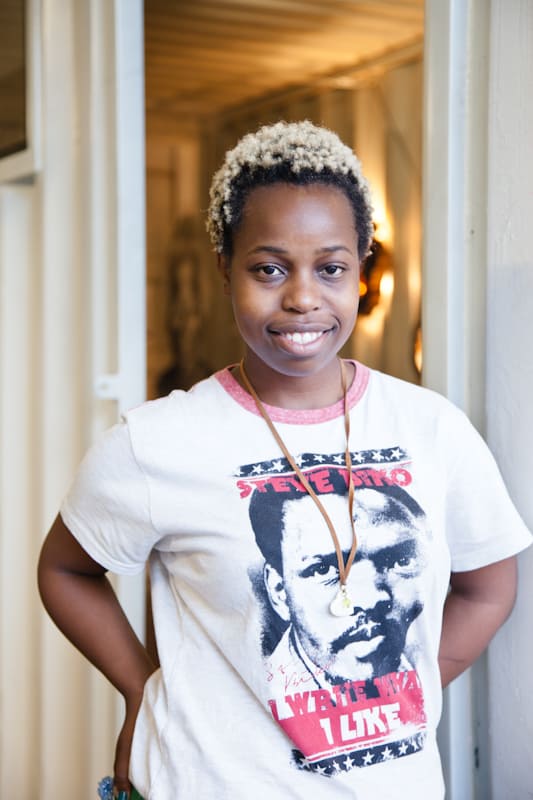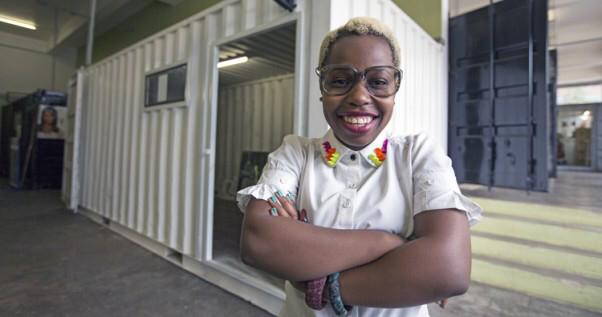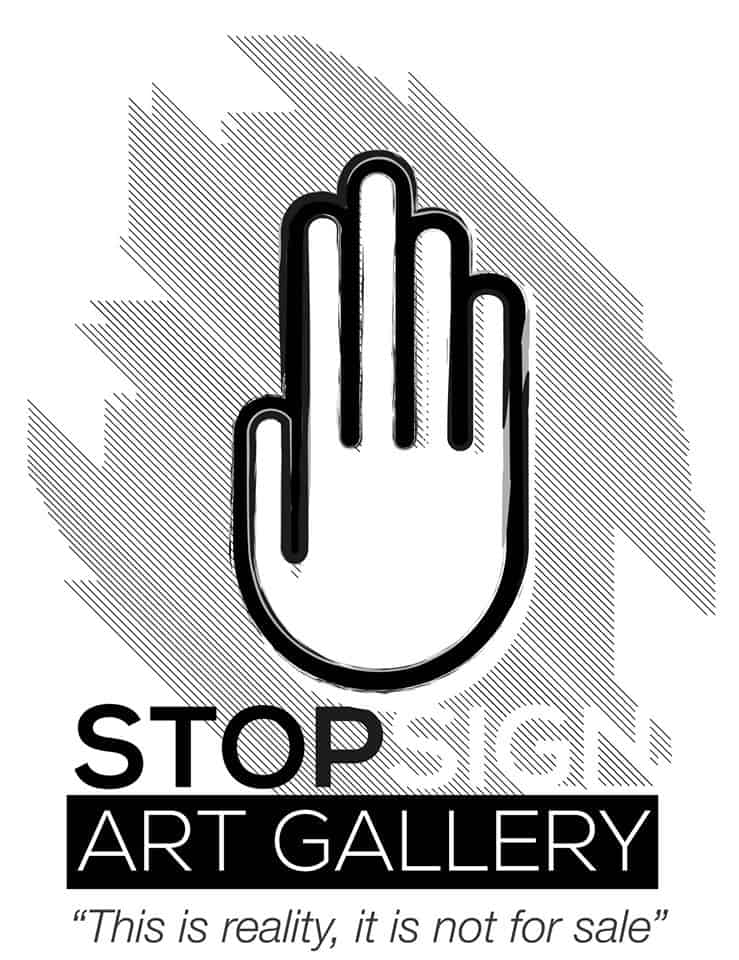
Fay Jackson: Hello Zama, thank you so much for meeting with me. Would you mind introducing yourself?
Zama Phakathi: Hi my name is Zama from the Stop Sign Art Gallery and I was born and raised in Johannesburg.
What inspired you to start a gallery?
The inspiration behind starting the gallery was that I saw a gap in terms of resources for young people; there weren’t enough resources for upcoming young artists.
What is the significance of the shipping container?
The shipping container is an art piece on its own! It’s unique, having an art gallery inside a shipping container. I chose the location of the art gallery in order to be around other art galleries, not simply on the corner of a random street. I looked at Rosebank but I had found this place in Maboneng first and stuck with it.
Do you think that the nature of the space (with regard to both the shipping container and its location in the newly gentrified district of Maboneng) influences the kind of work exhibited within it?
It definitely does. Another reason why I chose Maboneng was because the majority of the businesses around here are owned and run by young people; they are such an inspiration. A lot of young artists come here too, so yes, the location does influence the artwork exhibited here.

Zama Phakathi at the Stop Sign Art Gallery. From the Stop Sign Art Gallery Facebook page.
What are your views on traditional ‘white cube’ spaces that only display high-end work? How do you work within/ challenge the existing infrastructure?
My views on galleries as ‘white spaces’… (laughs) I wouldn’t say I have a problem with them, but I just believe that if you want to do something, it’s always nice to do it in a way that hasn’t really been done before. Like, for me, having a gallery with the same gallery culture, it wasn’t going to make a difference at all. In terms of breaking away from traditional practice, one of the things we do here is that we have a “closing party” as well as an opening night – it’s our way of saying, “We worked hard. We deserve this!”.
You curate exhibitions for young up-and-coming/mid-career South African artists. Would you say that you, as a galleryowner, have a responsibility to contribute to the development of South African art?
I definitely do feel that I have a responsibility to support young artists, because I am a young person myself. I know the hustle, I understand the hustle, and we understand each other on the same level. The point is that I think my space is more comfortable than other spaces [for young upcoming artists]. I also hold jam sessions inside the container where I have young musicians just sitting around and jamming; and it’s amazing how it gets packed to a point where we are like, “Let’s go home now, it’s too hot in here!” (laughs)
What is your selection process when deciding on artists to exhibit?
When deciding on artists to exhibit, I would describe it as if we are on a spiritual journey of finding each other. I look for them and they look for me. At the same time, it is important that I connect with their work; if I don’t then I won’t really know how to explain it to the next person who walks into the gallery. So the journey of finding each other continues…
The upcoming issue of Art South Africa (and the magazine, going forward) seeks to investigate the concept of African Art, examining Africa as a mind-set and a cultural belonging, not just a topographical locale. What does the term ‘African Art’ mean to you?
The term ‘African Art’ to me means that it is art that is created in Africa, art that is reflecting our African side, a side that is totally different from the ‘Western’ side. African art is a hot topic at the moment because we own the market! I would definitely say it is ‘trending’ at the moment; it’s even a point of fashion, with the use of African designs, tribal designs etc. This is due to tourists coming to Africa and buying these things because they don’t have it back at home. It’s the same with music, if you have your style and it’s unique you will get gigs and perform overseas, and it’s the same with art because we have a unique point of view.

The Stop Sign Art Gallery is located at 263 Main St, Maboneng, City Centre, Johannesburg
This interview is featured in the upcoming Art South Africa August Digital Edition.
Download the Art South Africa App here to read the free Digital Edition.



